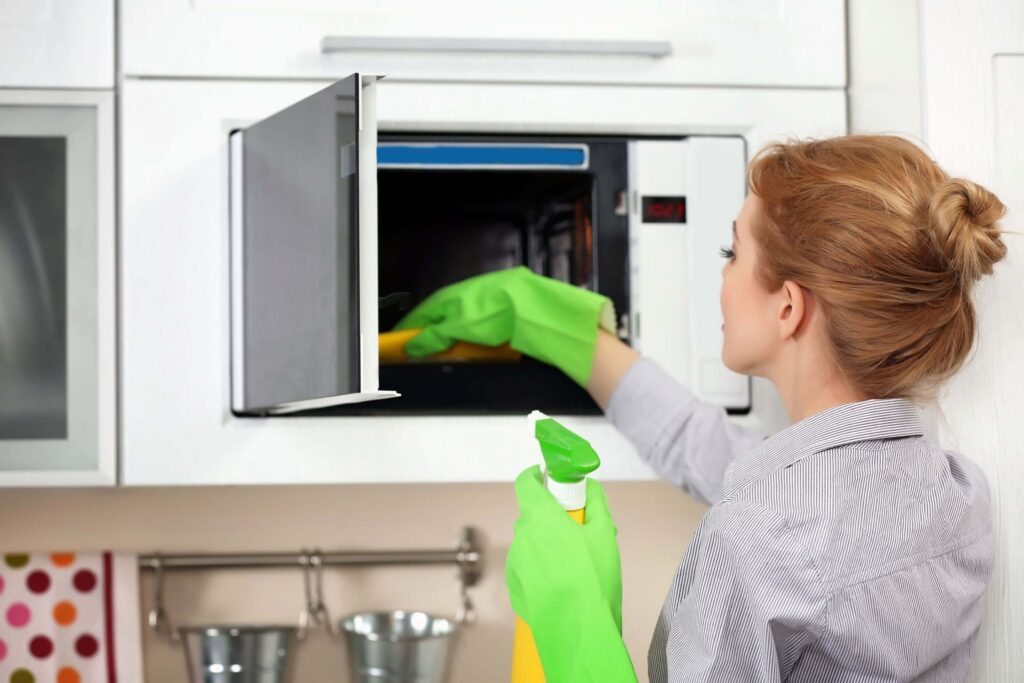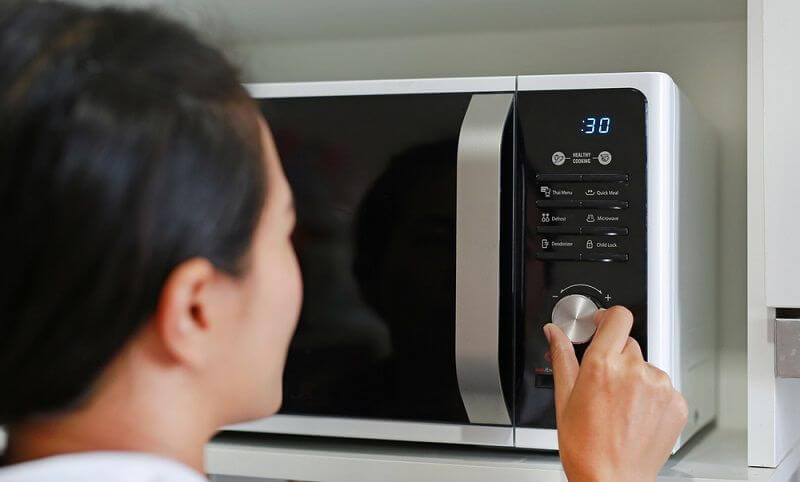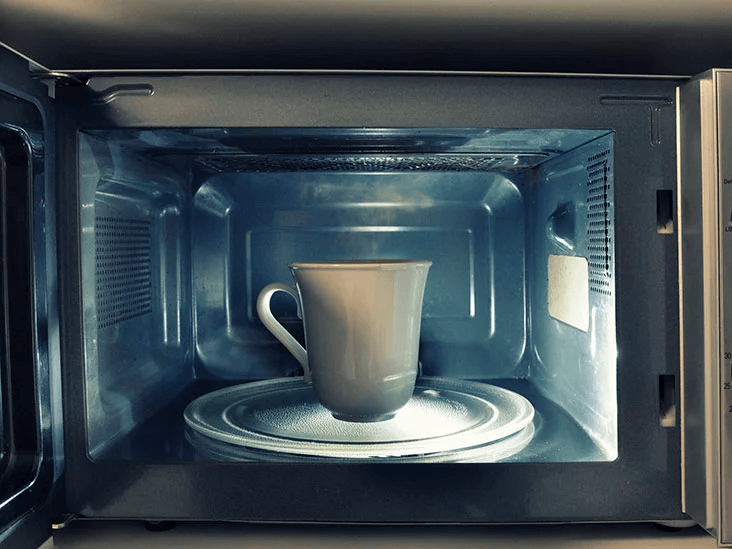
Microwave ovens have become indispensable in our fast-paced lives. They make reheating leftovers, defrosting frozen foods, and even cooking quick meals a breeze. But amid the convenience they offer, there’s a lingering question: Are microwave ovens safe, or do they pose radiation risks to our health? In this comprehensive guide, we’ll delve deep into the world of microwave oven safety, exploring the science behind these kitchen appliances and learning how to protect ourselves from any potential dangers. So, let’s get cooking – in the safest way possible!
Understanding Microwave Radiation
To understand microwave oven safety, it’s essential to grasp the basics of microwave radiation and how these appliances work. So, let’s break it down:
What is Microwave Radiation?
Microwave radiation is a form of electromagnetic radiation, residing within the electromagnetic spectrum alongside visible light and radio waves. These microwave ovens operate at a frequency of 2.4 gigahertz (GHz), and the radiation they emit is used to heat and cook food.
How Microwave Ovens Generate Heat
Microwave ovens are equipped with a component called a magnetron, which is responsible for producing the microwaves. These microwaves are then channeled into the cooking chamber, where they interact with the food.
The magic happens when the microwaves interact with the molecules in your food, such as water, fats, and sugars. These molecules absorb the microwave radiation, which causes them to vibrate, generating heat through a process known as dielectric heating.
The Safety Concern: Radiation Leakage
Now that we have a basic understanding of how microwave ovens work, let’s get to the heart of the matter – radiation safety. The primary concern is the potential for radiation leakage from your microwave oven.
How Safe Are Microwave Ovens?
To put your mind at ease right away, it’s crucial to note that microwave ovens are designed with safety in mind. Manufacturers take radiation safety seriously, and microwave ovens are equipped with several built-in safety features. However, like any appliance, they can deteriorate over time, and proper care is essential.
Built-In Safety Measures
Microwave ovens are equipped with a series of safety features to prevent radiation leakage. These include:
- Interlock Door Mechanism: The interlock door mechanism ensures that the microwave can only operate when the door is securely closed.
- Mesh Screens: The oven’s glass door has a mesh screen that prevents microwave radiation from escaping.
- Safety Interlock Switches: These switches interrupt power if the door is opened while the microwave is in operation.
Regulatory Oversight
The U.S. Food and Drug Administration (FDA) regulates microwave ovens to ensure they meet safety standards. Manufacturers are required to perform radiation leakage tests, and any microwave oven that exceeds the allowable limits is subject to recalls or other regulatory actions.
Is Radiation Leakage a Major Concern?
While microwave ovens are generally safe, there have been instances of radiation leakage in older or damaged units. However, these cases are relatively rare. It’s essential to be aware of the potential risks and take necessary precautions.
Checking for Radiation Leakage
The risk of radiation leakage is minimal, but it’s always a good idea to be proactive. You can use a microwave leakage detector, which is a specialized device designed to check for radiation leaks. These detectors are widely available and simple to use. If your microwave is older or you suspect damage, using one of these detectors can provide peace of mind.
Tips to Ensure Microwave Oven Safety

Now that we’ve addressed the primary safety concern, let’s delve into some practical tips to ensure that your microwave oven is used safely.
Inspect the Door Seal
One of the easiest ways to ensure microwave safety is by regularly inspecting the door seal, also known as the door gasket. The door seal is a vital component that ensures microwave radiation stays contained within the oven.
Why Is the Door Seal Important?
- Prevents Radiation Leakage: A damaged or worn-out door seal can allow microwave radiation to escape, potentially exposing you to harmful levels.
How to Inspect the Door Seal
To check the condition of the door seal:
- Place a piece of paper against the door and close it.
- Try to pull the paper out. If it comes out easily, your door seal may be damaged or compromised.
- In such cases, it’s advisable to replace the door seal promptly. Most microwave manufacturers offer replacement parts for their appliances.
Avoid Damaged Doors
Sometimes, the microwave door can sustain physical damage, such as dents, cracks, or warping. A damaged door can compromise its ability to keep radiation contained.
Why Is a Damaged Door a Concern?
- Maintains the Radiation Barrier: The integrity of the microwave door is crucial to prevent radiation leakage.
How to Handle a Damaged Door
If you notice any damage to the microwave door:
- Refrain from using the microwave until the door is repaired or replaced.
- Contact the manufacturer or a certified technician to assess and fix the damage.
- Avoid attempting to repair the door yourself, as it requires specialized tools and knowledge.
Keep Your Distance
Maintaining a safe distance from the microwave when it’s in operation is a simple but effective practice.
Why Keep Your Distance?
- Reduces Exposure: Maintaining a reasonable distance from the microwave while it’s running can minimize any potential exposure to radiation leakage.
How Far Should You Stand?
- It’s advisable to maintain at least an arm’s length of distance from the microwave when it’s in use. This simple practice can significantly reduce your exposure.
Use Microwave-Safe Containers
The type of container you use in your microwave matters more than you might think. Using the wrong materials can lead to harmful consequences.
Why Use Microwave-Safe Containers?
- Prevents Harmful Chemical Release: Some materials can release harmful chemicals when exposed to microwave radiation, potentially contaminating your food.
What Are Microwave-Safe Containers?
Microwave-safe containers are typically labeled as such. They are designed to withstand microwave radiation without releasing harmful substances. Look for containers made of materials like glass, ceramic, or microwave-safe plastics.
Don’t Run It Empty
Running your microwave oven empty might seem harmless, but it can have unintended consequences.
Why Is Running It Empty a Problem?
- Magnetron Damage: Running a microwave with nothing inside can damage the magnetron, a key component that produces microwaves. This damage may result in radiation leakage.
Always Place Something Inside
Even if you’re only heating a cup of water, it’s advisable to place a microwave-safe container with some liquid inside the oven. This small precaution can prevent damage to the magnetron and potential radiation risks.
Regular Maintenance
Like any other appliance, microwave ovens require periodic maintenance to ensure they operate safely.
Why Does Your Microwave Need Maintenance?
- Regular maintenance helps ensure that your microwave’s safety mechanisms, including the door seal and interlock switches, are in working order.
How to Maintain Your Microwave
Here are some steps to keep your microwave in good shape:
- Clean the interior regularly to remove food splatters and residue, as these can damage the microwave’s interior.
- If you notice any unusual noises or if the microwave isn’t heating food properly, consult the manufacturer or a qualified technician for inspection and repairs.
- Check and tighten any loose screws or bolts in the microwave’s casing.
- Inspect the power cord and plug for any damage.
- Consider professional servicing at regular intervals to ensure all safety features are functioning as they should.
Debunking Microwave Myths

Before we conclude, let’s dispel some common myths about microwave ovens that have circulated over the years.
Myth 1: Microwaving Food Depletes Its Nutrients
This myth suggests that microwaving food results in a loss of nutrients. In reality, microwave cooking is one of the best methods to preserve the nutritional value of your food.
The Truth:
- Microwaving is a quick cooking method that uses minimal water, helping to retain vitamins and minerals better than methods involving prolonged heating or excessive liquid.
Myth 2: Microwaves Cause Cancer
One of the most enduring myths is the fear that microwave radiation can lead to cancer.
The Truth:
- Microwave radiation is non-ionizing, which means it lacks the energy to alter the structure of molecules in a way that could lead to cancer. In essence, it’s not the same harmful ionizing radiation you encounter in X-rays or with nuclear materials.
Myth 3: Microwaves Make Food Radioactive
Some individuals believe that microwaving can render food radioactive. However, this myth is far from the truth.
The Truth:
- Microwaving food does not make it radioactive. The process involves exciting the molecules within the food to generate heat, not altering its atomic structure.
Final Words
Microwave ovens have become an essential part of our modern kitchen arsenal. With their convenience and speed, they simplify our daily cooking and meal preparation routines. As we’ve explored in this guide, the risks of radiation leakage from microwave ovens are minimal, thanks to stringent safety regulations and built-in safety features. However, it’s essential to stay vigilant and follow basic safety practices, such as inspecting the door seal, avoiding damaged doors, maintaining a safe distance, using microwave-safe containers, never running it empty, and scheduling regular maintenance.
In summary, microwave ovens are safe to use when proper precautions are taken. These kitchen appliances, when used correctly and maintained well, pose no significant radiation risks. The convenience and efficiency they offer are undeniable. So go ahead, reheat that leftover pizza or defrost those frozen veggies, and enjoy the delicious results with peace of mind. Microwave oven safety is all about awareness and responsible use. Happy cooking!
Frequently Asked Questions (FAQ) – Microwave Oven Safety: Avoiding Radiation Risks
Got questions about microwave oven safety and radiation risks? We’ve got you covered! Here are some frequently asked questions along with concise answers to help you navigate the world of microwave ovens and ensure your safety:
1. Are microwave ovens safe to use?
Answer: Yes, microwave ovens are safe when used correctly and well-maintained. They are designed with built-in safety features to prevent radiation leakage. However, it’s essential to follow safety guidelines to ensure their safe operation.
2. How do microwave ovens work?
Answer: Microwave ovens use electromagnetic radiation at a frequency of 2.4 GHz to heat food. The microwaves excite water, fat, and sugar molecules in the food, generating heat through a process called dielectric heating.
3. What is microwave radiation, and is it harmful?
Answer: Microwave radiation is a type of electromagnetic radiation, but it’s non-ionizing, meaning it lacks the energy to alter the structure of molecules and is not harmful like ionizing radiation from X-rays or nuclear materials.
4. How can I check for radiation leakage from my microwave?
Answer: You can use a microwave leakage detector, a specialized device designed to check for radiation leaks. These detectors are simple to use and widely available, providing peace of mind if you suspect an issue with your microwave.
5. What should I do if I suspect my microwave is leaking radiation?
Answer: If you suspect radiation leakage, stop using the microwave immediately. Contact the manufacturer or a qualified technician to inspect and repair your microwave. Safety is a top priority.
6. Can using a microwave deplete the nutrients in food?
Answer: No, microwaving is one of the best methods for preserving the nutrients in food. It’s a quick cooking method that uses minimal water, helping to retain vitamins and minerals better than prolonged heating or excessive liquid.
7. Do microwave ovens make food radioactive?
Answer: No, microwaving does not make food radioactive. It heats the food by exciting molecules within it, but it does not alter the atomic structure to make it radioactive.
8. Can I use any container in my microwave?
Answer: No, not all containers are safe for microwave use. Use microwave-safe containers made of materials like glass, ceramic, or microwave-safe plastics. Avoid materials that may release harmful chemicals when exposed to microwave radiation.
9. Is it safe to run a microwave oven empty?
Answer: It’s not recommended to run a microwave empty. Doing so can damage the magnetron, a key component that produces microwaves, potentially leading to radiation leakage. Always place a microwave-safe container inside, even if it’s just a cup of water.
10. How often should I perform maintenance on my microwave?
Answer: Regular maintenance is essential to ensure microwave safety. Clean the interior regularly, check for loose screws, inspect the power cord and plug for damage, and consider professional servicing at regular intervals to ensure all safety features are working correctly.